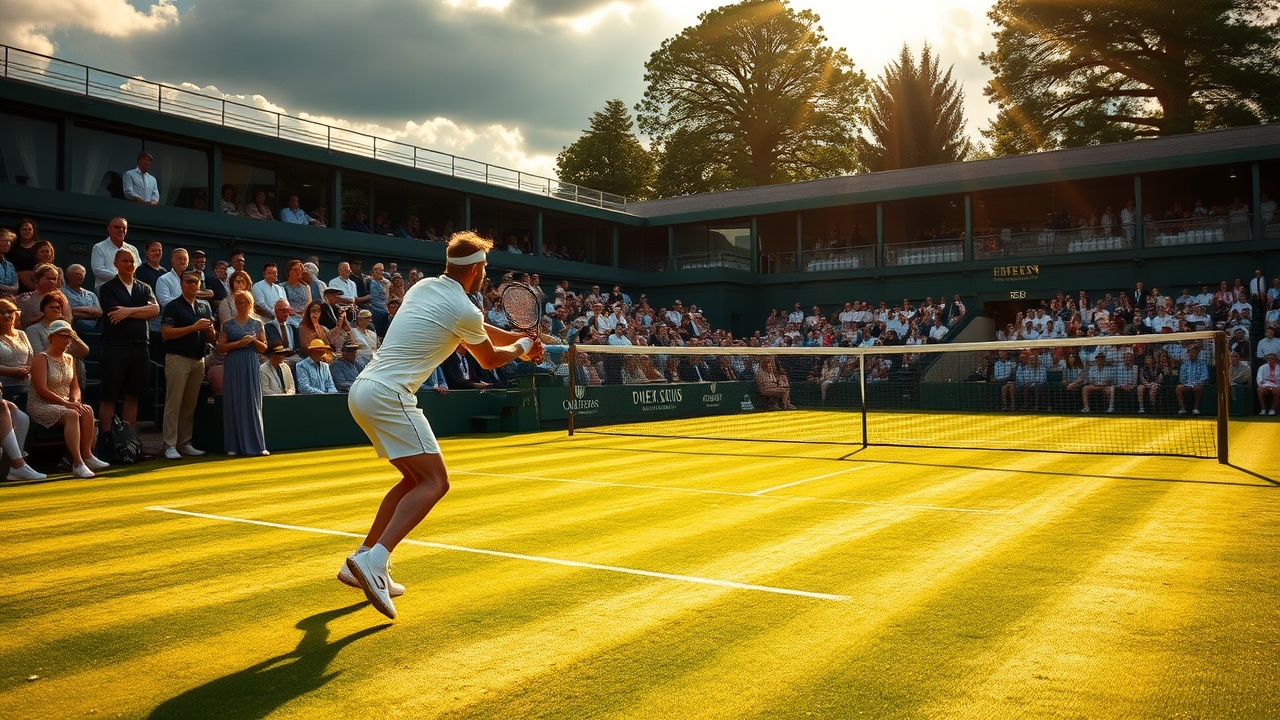Monday Tennis Roundup
In this week’s Monday Tennis Roundup, we delve into the remarkable events that unfolded on the courts over the past week. Highlights include a dramatic match where one player battled back from an astounding 11 match points against her opponent, discussions surrounding the characteristics of grass court tennis, and an exhibition of slice techniques by a tournament finalist.
Elise Mertens’ Remarkable Comeback
Just days after Carlos Alcaraz clinched the French Open by saving three match points against Jannik Sinner, Belgian player Elise Mertens raised the stakes at the Rosmalen Grass Court Championships. In her semifinal clash with Ekaterina Alexandrova, Mertens displayed tenacity rarely seen in high-stakes matches, saving a remarkable 11 match points. This feat ties her with Zsófia Gubacsi for the most match points saved by a player who ultimately secured victory in matches since 2001. Gubacsi famously saved the same number in a first-round match at the French Open that year. Meanwhile, Mayar Sherif managed to save 12 match points in a Budapest Open encounter in 2022, though that event was not classified as a full WTA tour event.
Mertens, who has previously reached a high ranking of No. 12 and clinched four Grand Slam titles in doubles, was in dire straits during her match against Alexandrova, trailing 6-2, 5-4, and facing a critical 15-40 on her serve. However, she rallied to save that initial match point, showcasing her skill with a stunning backhand winner. Later, serving at 6-5, she fortuitously saved five more match points that ultimately led her to a tiebreak where she triumphed 9-7. Despite Alexandrova’s commendable performance, which included another lead in the third set, Mertens secured a 2-6, 7-6 (7), 6-4 victory.
Following this astonishing performance, Mertens secured the title by overcoming Elena-Gabriela Ruse in the final, further cementing her standout week.
Characteristics of Grass Court Tennis
As the grass court season progresses, the qualities of this surface are often under debate among tennis aficionados. Proponents appreciate the rapid, serve-oriented play that characterizes grass tennis, while others argue it lacks excitement compared to the longer rallies typical of clay surfaces. Analyzing statistics from recent matches supports both sides of the argument; for instance, a quarterfinal match featured a total of 66 winners compared to 38 unforced errors—a strikingly efficient performance. In stark contrast, the much-lauded French Open final between Alcaraz and Sinner showcased more unforced errors than winners, indicative of the slower game’s unique demands.
Additionally, during the transition from clay to grass, players face a significant challenge. Those who qualify often need to come through two grueling matches, making them formidable opponents. An epitome of this resilience is Tatjana Maria, who recently claimed the Queen’s tournament title after defeating seven players, including several seeded opponents, demonstrating her adeptness on grass. At 37 years old and currently ranked No. 86, Maria’s victory is particularly noteworthy as she skillfully navigated through high-pressure scenarios to earn her first WTA 500 title while accompanied by her supportive family.
Emergence of Young Players
This week also spotlighted the emergence of younger players on the ATP Tour. With Ben Shelton advancing to the semifinals of the Stuttgart Open, he made history by entering the top 10 for the first time, continuing the trend of generational shifts in tennis. Currently, there are now six players born in the 2000s occupying positions within the ATP top 10. This change signifies a transition in the landscape of men’s tennis, with established athletes from earlier generations slowly being replaced.
Conclusion
As both men’s and women’s tours continue, tennis enthusiasts are left with much to discuss, from match strategies and playing styles to the shifting dynamics of the professional teams. Please share your thoughts on the developments this week!




